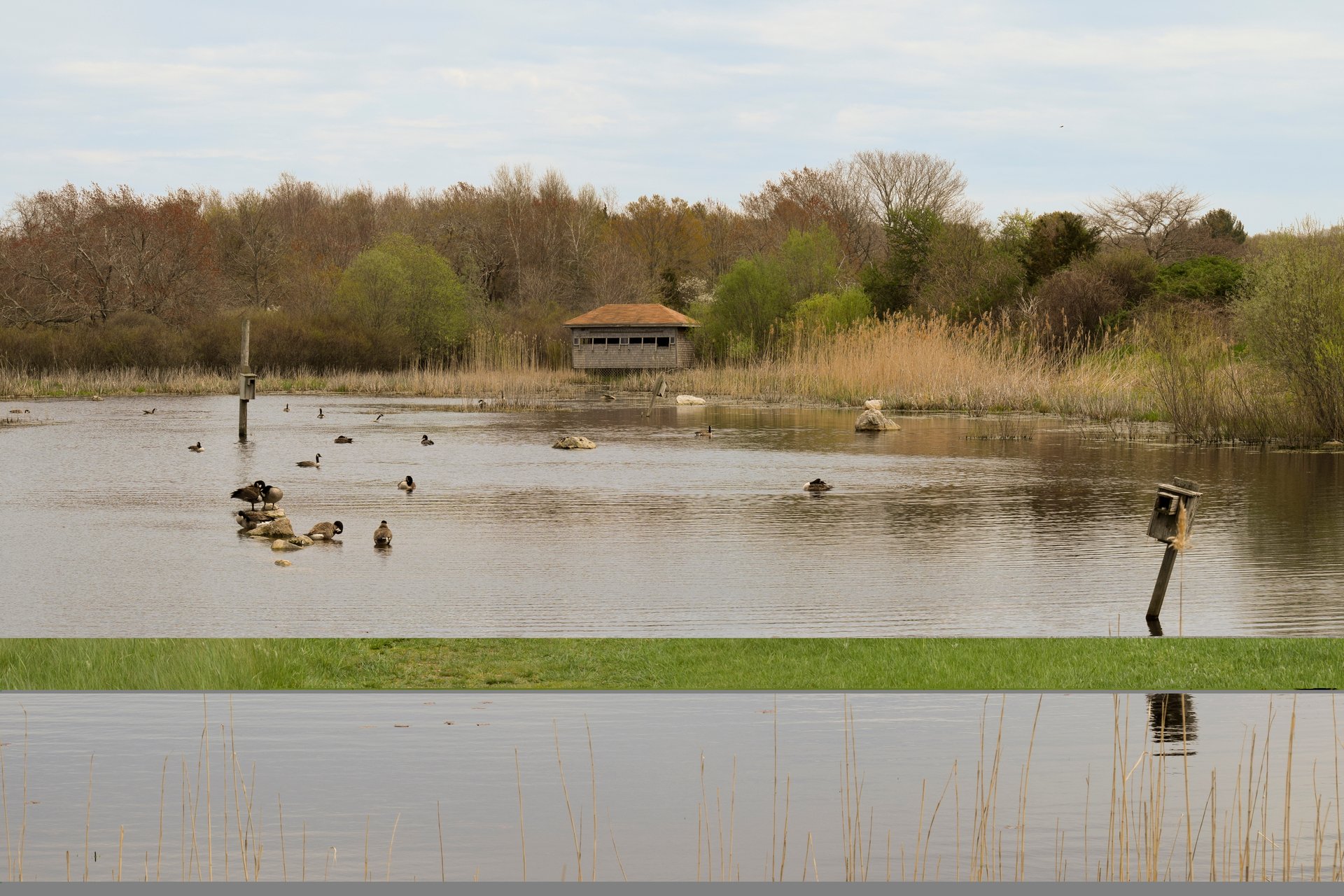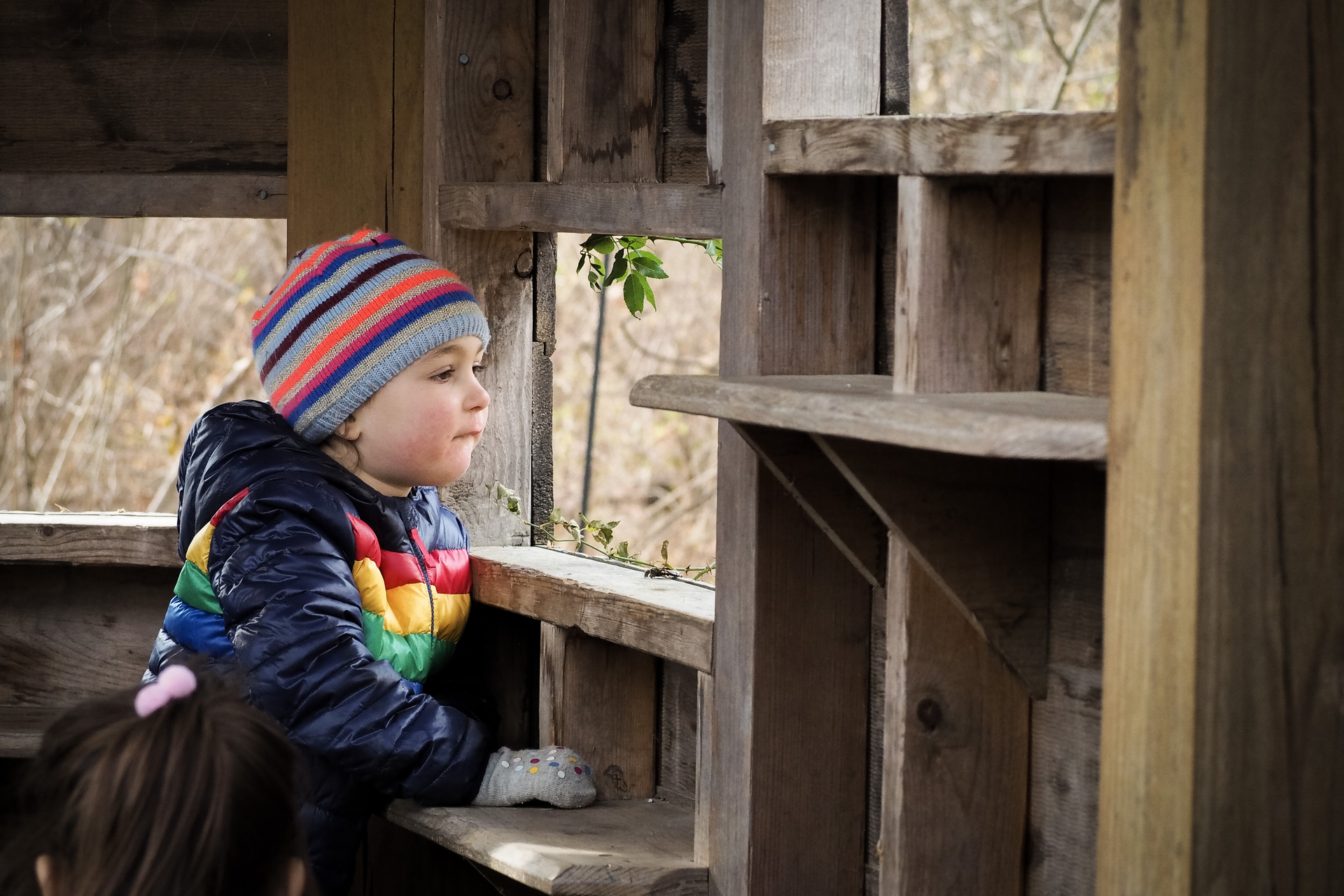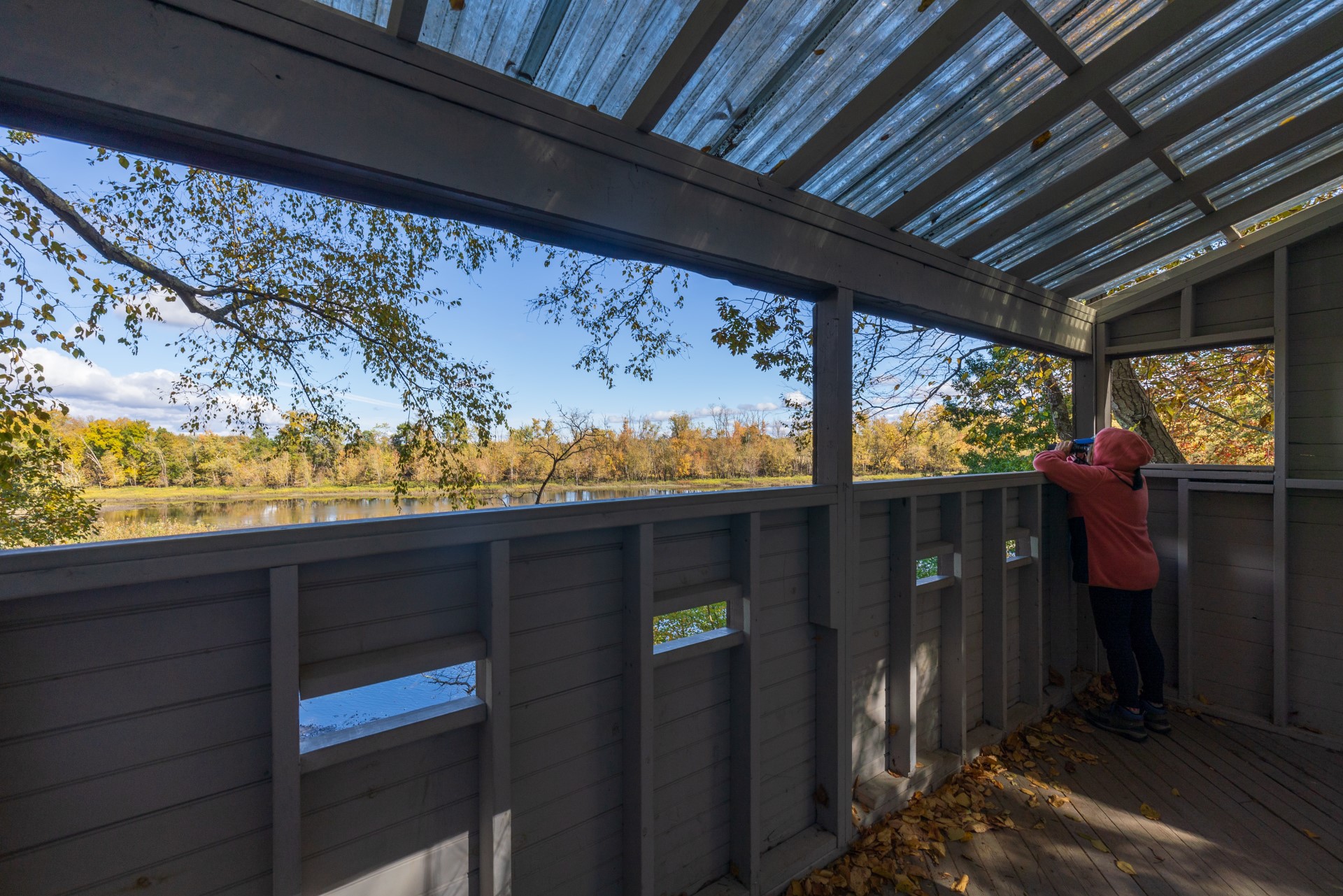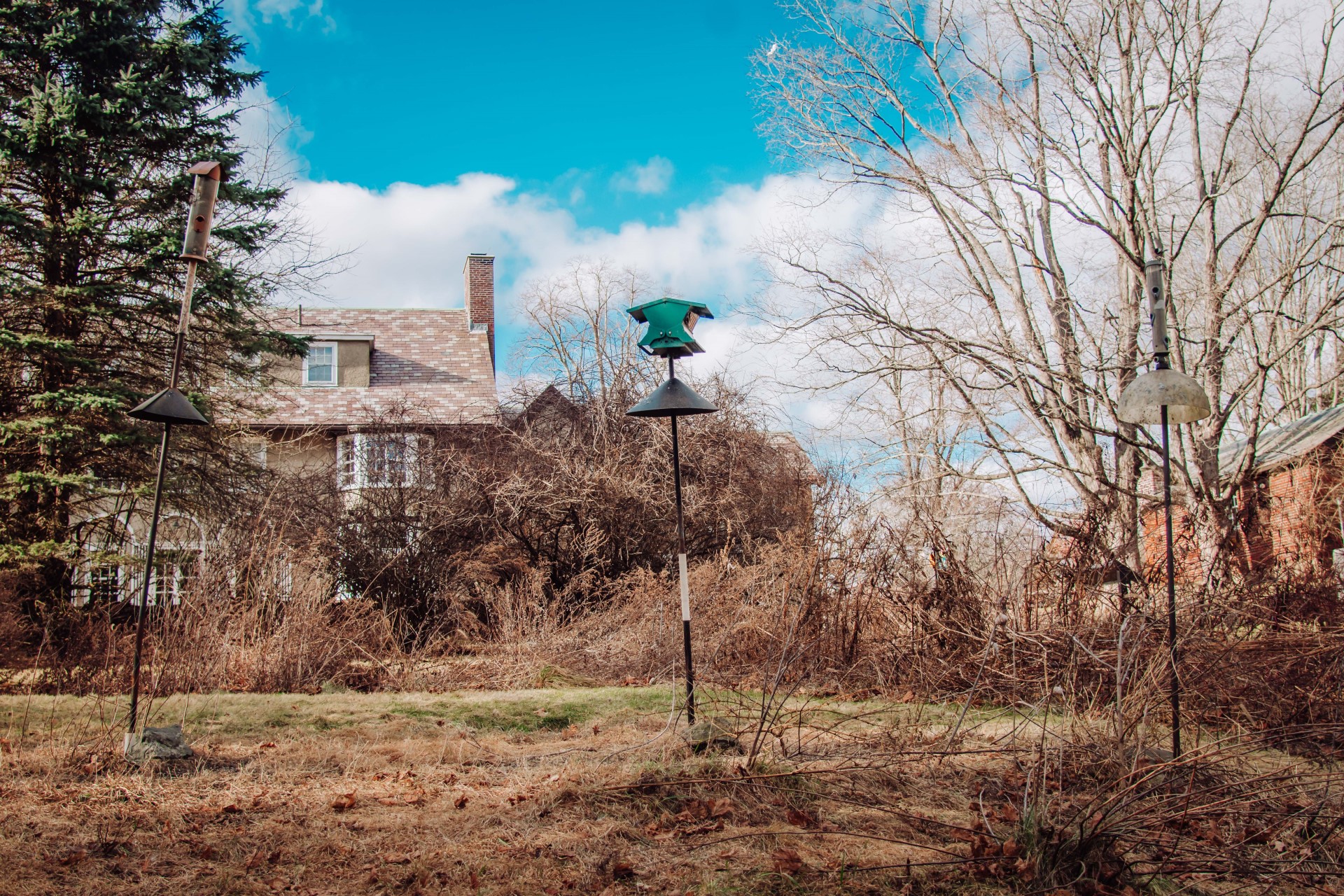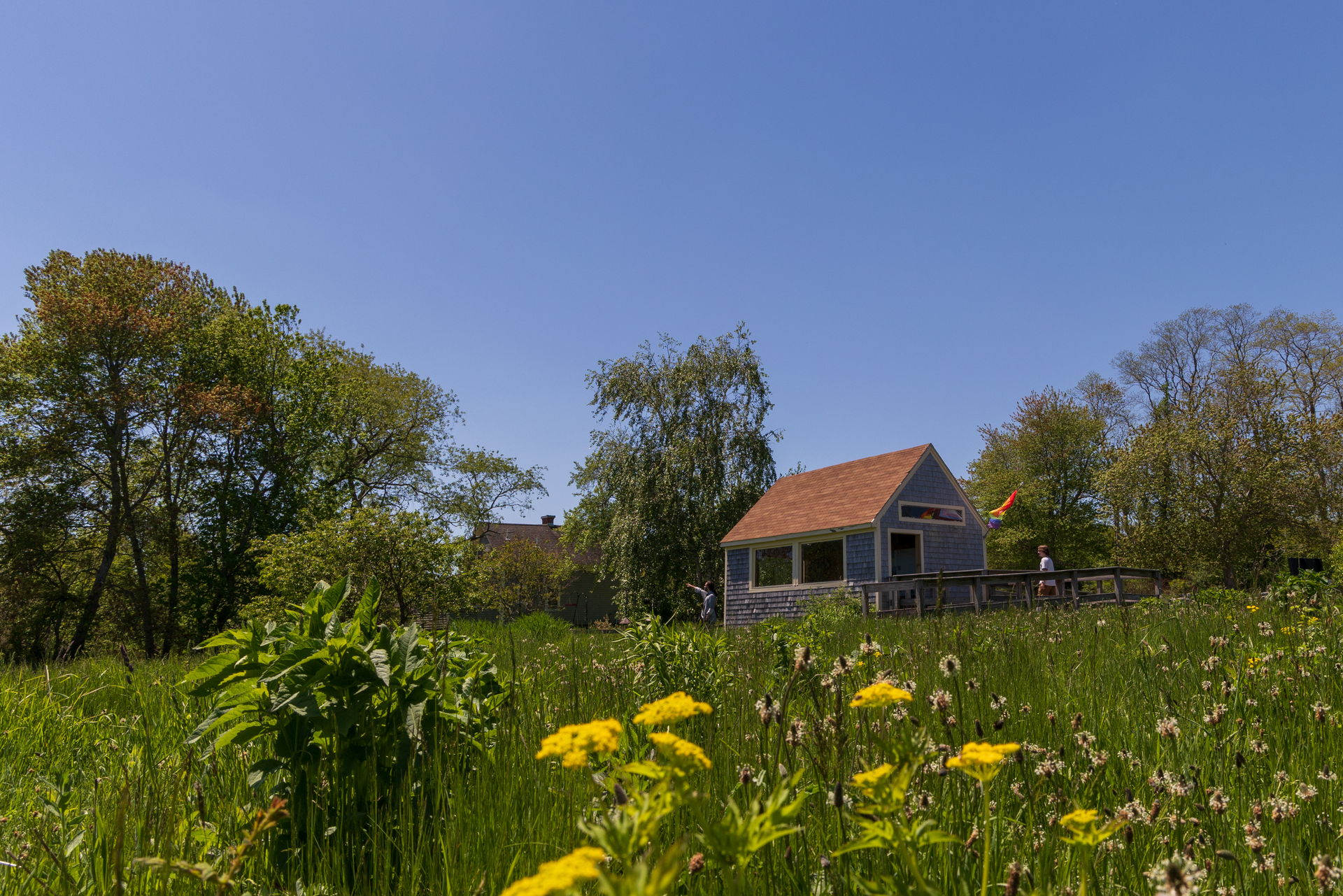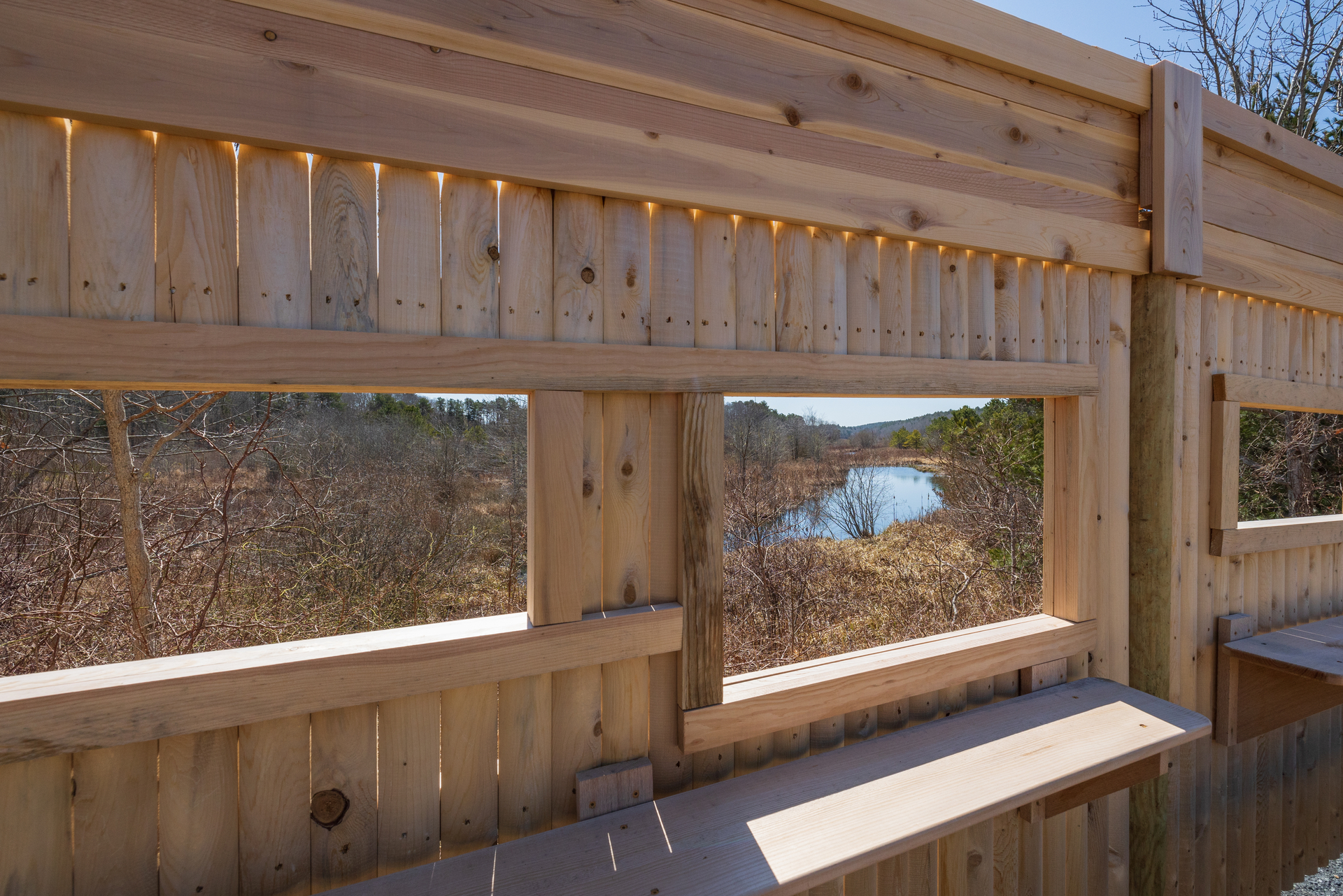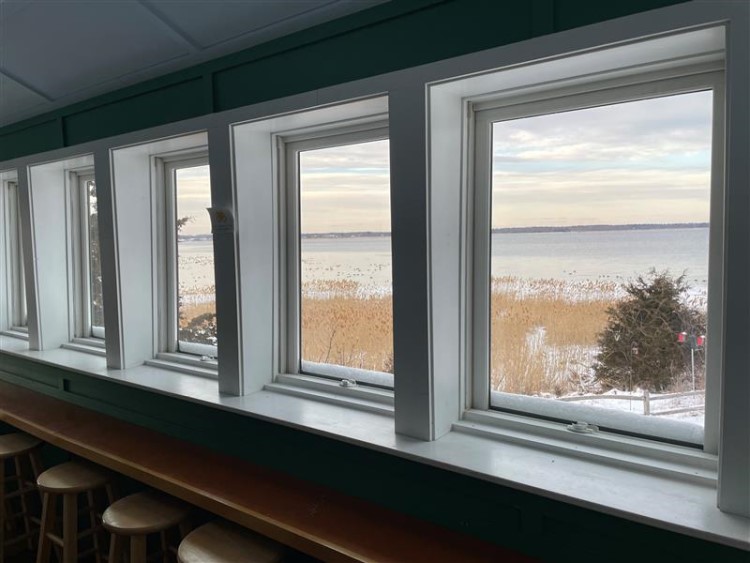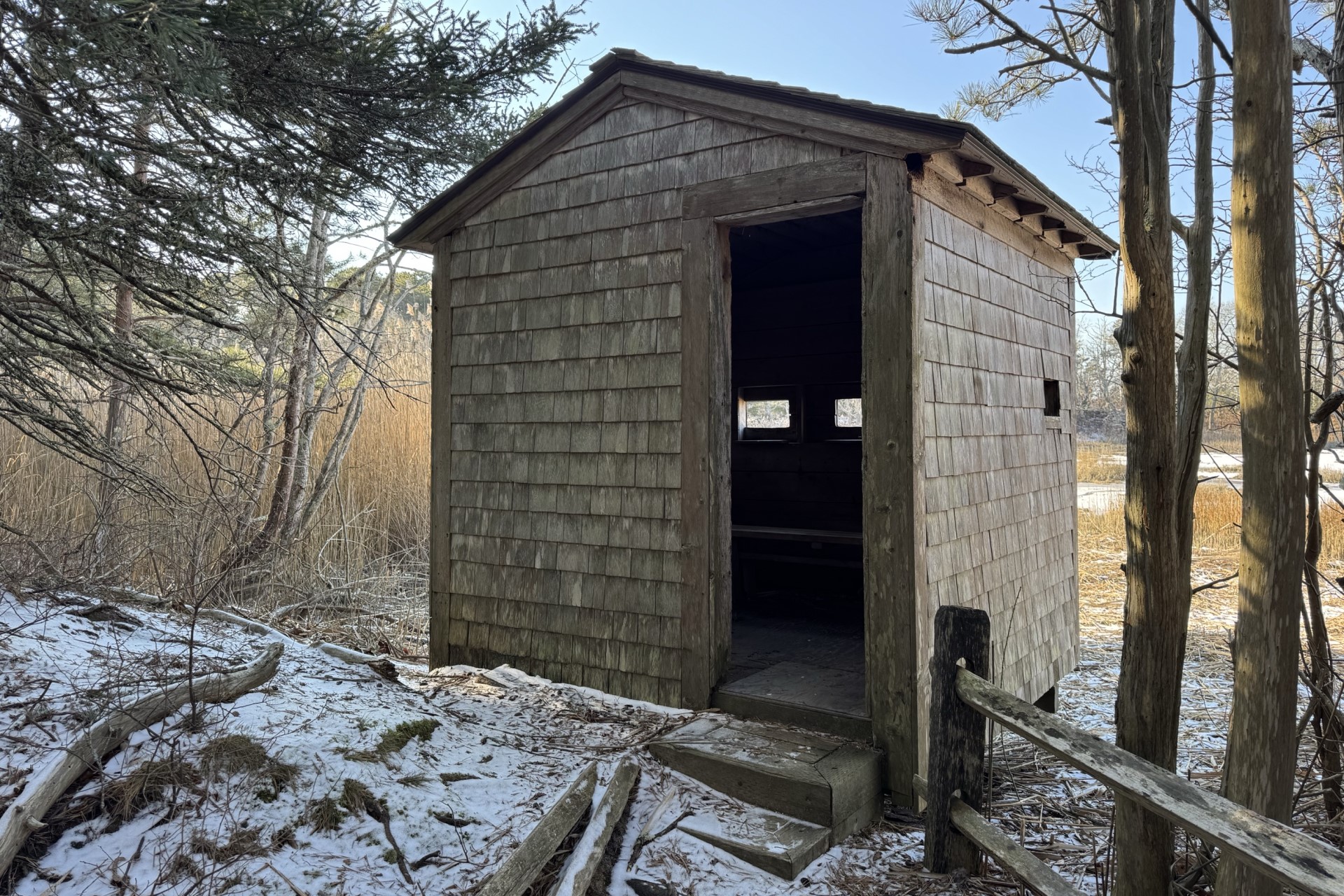Through the Blind: The Best Spots for Wildlife & Bird Watching
February 13, 2025
Shhhh! Keep your movements slow and your voice low—if you want a front-row seat to nature’s secret world, subtlety is key.
Birds and other wildlife often shy away from human presence, as it can disrupt feeding habits or much needed rest. Binoculars and scopes help bridge the gap, but for a closer view with more discretion, wildlife blinds offer the perfect solution.
These cleverly designed shelters provide a way to watch animals in their natural habitat without being seen. A simple wooden structure with strategic openings lets you stay out of sight while enjoying a window into the wild. Several Mass Audubon wildlife sanctuaries feature blinds in prime locations, offering incredible opportunities to observe birds, mammals, and other creatures as they go about their day—unbothered, unstressed, and completely wild.
Get a Closer Look of Deer Pond
At Drumlin Farm Wildlife Sanctuary, Lincoln
As you make your way onto Drumlin Farm’s Boyce Field Loop Trail, before entering the agricultural fields, stop by the wildlife blind overlooking Deer Pond. Birds and animals come here to drink, bathe, and nest, offering plenty to see. It’s called Deer Pond for a reason, so be on the look out for fawns taking in the safety of the water’s edge during the warmer months. Also, keep an eye out for swimming otters and plenty of birds, including titmice, chickadees, and cardinals, visiting the feeders set up nearby.
A Bird’s Eye View from the Observation Tower
At Arcadia Wildlife Sanctuary, Easthampton
The Fern Trail at Arcadia Wildlife Sanctuary in Northampton takes you through upland forest and into floodplain woods, where Arcadia’s viewing tower stands tall above the Mill River and Hulbert’s Pond. Climb the stairs for an expansive view of the landscape below. Wood Ducks float by while Great Blue Herons stalk fish in the shallows. With luck, you might even glimpse an otter sliding into the water.
A Backyard Birding Haven
At Museum of American Bird Art (MABA) Education Center & Wildlife Sanctuary, Canton
Tucked alongside programmatic buildings and art maker space known as The Nest, MABA's wildlife blind overlooks a bird feeding station and native wildflower garden. In winter, vibrant flashes of color break the snowy backdrop as Northern Cardinals, American Goldfinches, and Black-capped Chickadees flit between the feeders. With natural perches designed for easy viewing, this is a prime spot for photographers hoping to capture songbirds in their element.
Two Blinds, Double the Views
At Daniel Webster Wildlife Sanctuary, Marshfield
Take your pick of two discrete wildlife viewing locations at Daniel Webster in Marshfield. The All Persons Trail’s universally accessible path leads to a blind overlooking a shallow wet panne, where wading birds like sandpipers hunt and dragonflies dart across the water’s surface.
Alternatively, follow the Fox Hill Trail to a panoramic overlook at the Fox Hill observation platform. Along the way, a wildlife blind offers a chance to see Northern Harriers hunting over the marsh. Look out at the distant Osprey platform to see if its residents have returned from their winter migration.
Witness Restoration in Action
At Tidmarsh Wildlife Sanctuary, Plymouth
Thanks to one of the largest freshwater restoration projects in the Northeast, this former cranberry bog now features a thriving wetland. Follow the accessible Restoration Way Trail through revitalized grasslands to the observation blind overlooking Beaver Dam Brook. Patient watchers may spot beavers hard at work, muskrats paddling through the water, or migratory duck taking a much-needed rest from their journey.
A Hidden Gem on Wildlife Pond
At Wachusett Meadow Wildlife Sanctuary, Princeton
A short spur off the South Meadow Trail at Wachusett Meadow in Princeton leads to a secluded blind facing Wildlife Pond, where wetland creatures bask in the peaceful surroundings. Keep watch for river otters, beavers, and mink moving through the water, while Belted Kingfishers dive for fish and Wood Ducks glide across the surface. Occasionally, deer or even moose will emerge from the forest to drink along the pond’s edge.
The Best Seat in the House
At Joppa Flats Education Center, Newburyport
Wind? Rain? Snow? These trivial matters won’t deter the committed nature lover at Joppa Flats in Newburyport. While not a blind in the traditional sense, their indoor observation area offers a warm, protected space with panoramic views of the Merrimack River estuary as it meets the Atlantic Ocean. From here, you can scan the water for wintering bald eagles, diving ducks, and migrating shorebirds without ever stepping out into the elements.
Battling for the Best View
At Wellfleet Bay Wildlife Sanctuary, Wellfleet
Follow Wellfleet Bay’s All Persons Trail to the wildlife blind overlooking Goose Pond and Cape Cod’s signature salt marshes. This tranquil spot offers a glimpse into coastal life, where shorebirds probe the mud for food, Ospreys circle overhead, and Diamondback Terrapins bask in the sun. At times, the invasive Common Reed (Phragmites australis) encroaches on the view—a reminder of the ongoing battle to maintain native habitats. Wellfleet Bay’s land management efforts help, but the continuing struggle highlights the impact invasive species have on fragile ecosystems and the difficulties in controlling them.
Find More Places to Explore
If you can’t make it to one of these carefully placed blinds, improvise! Use trees, shrubs, or natural cover to blend into the landscape, keeping your distance while wildlife and bird watching respectfully. If you’re looking for more opportunities to observe birds and wildlife, find a Mass Audubon wildlife sanctuary near you and start exploring today.
Stay Connected
Don't miss a beat on all the ways you can get outdoors, celebrate nature, and get involved.



